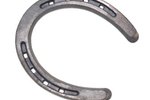If your dog has an open wound, he may be at considerable risk of developing an infection. Proper wound care can help speed your dog's recovery as well as lower his chances of becoming seriously ill due to a secondary infection. Consult with your veterinarian any time your dog develops a wound. Your veterinarian will show you what needs to be done to care for the injury properly.
Proper Wound Care is Crucial
Proper wound care at the time of injury can help prevent complications, such as infections, from occurring later. If your dog has been injured, focus on stopping the bleeding. Apply clean gauze or a clean piece of towel to the injured area and apply pressure for 5 to 10 minutes or until the wound stops bleeding. If necessary, wrap a bandage around the injured area. The bandage will hold the gauze in place; apply pressure while you contact your veterinarian. Describe your dog's injury to the veterinarian and determine whether or not he needs you to come into the veterinary clinic for emergency care.
If your veterinarian tells you to come into his office, you can expect him to clean the wound, debride it to remove dead tissue and suture it closed if necessary. If surgery or anesthesia is needed, your veterinarian will handle all of the details.
Caring for a Wound at Home
If your dog's wound is not severe enough to qualify for a trip to the veterinarian's office, you will need to provide wound care at home. It is always a good idea to muzzle your dog while caring for his injuries, as not all the aspects of wound treatment will be comfortable for him. You may want to recruit a helper.
Remove your dog's bandage and irrigate the wound thoroughly using a disinfecting surgical scrub such as Betadine, tap water or saline solution. Irrigating the wound can help reduce the likelihood of infection. The least painful way to irrigate a wound is by pouring large amounts of the solution through the wound until all dirt and debris have been washed away. Physically scrubbing the wound will cause pain and tissue damage; don't do it.
Once the wound is clean, apply multiple layers of fresh gauze and wrap the wound with a bandage to avoid contamination. Your veterinarian may recommend that you apply an antibiotic ointment to the injured area to help prevent infection.
Signs of Wound Infection
Wound infections can develop regardless of whether the original wound was treated at home or at your veterinarian's office. Wound infections are caused by bacteria and other sources of contamination getting into the wound. Signs of wound infection include:
- Redness
- Swelling
- Green, yellow, bloody or otherwise unhealthy looking discharge
- Foul odor
- Fever
- Lack of healing
- Biting, licking or chewing the wound
If you suspect your dog's wound is infected, seek veterinary care immediately.
Bite Wounds
Bite wounds are notorious for causing infections. Bite wounds tend to look less severe than they are because most of the damage is done below the skin. The truth is that bite wounds often cause deep punctures and contain a significant amount of bacteria. If your dog has been bitten by another animal, you need to take him to the veterinarian immediately. Your veterinarian will be able to determine the extent of the damage, clean the wounds as effectively as possible and prescribe antibiotics to help prevent infection.
References
Photo Credits
-
mauinow1/iStock/Getty Images
Writer Bio
Jen Davis has been writing since 2004. She has served as a newspaper reporter and her freelance articles have appeared in magazines such as "Horses Incorporated," "The Paisley Pony" and "Alabama Living." Davis earned her Bachelor of Arts in communication with a concentration in journalism from Berry College in Rome, Ga.





